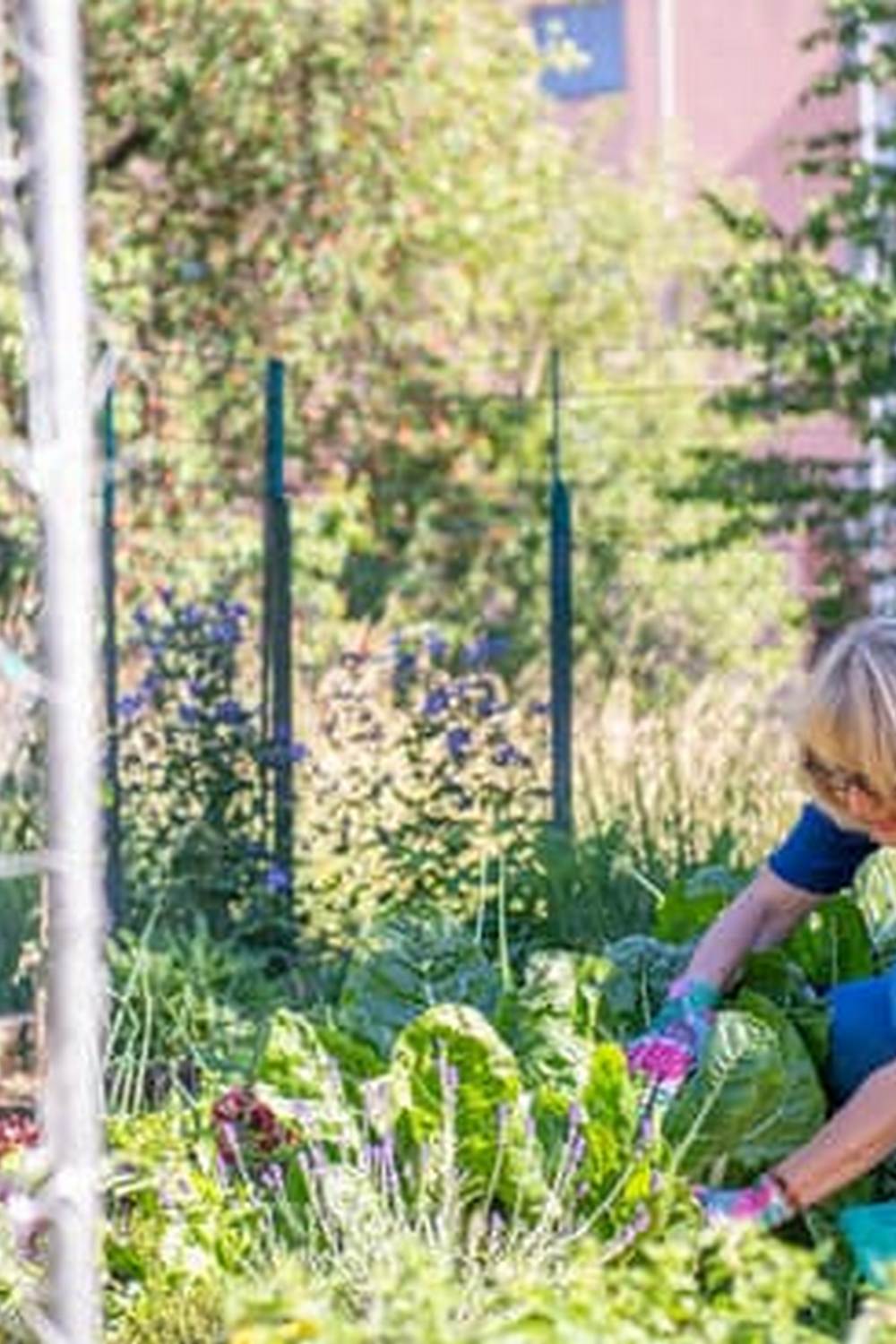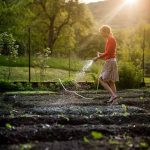Are you looking to bring a touch of untamed beauty and sustainability to your outdoor space? Wild gardens, also known as natural or native gardens, offer a unique opportunity to cultivate a diverse array of plants and vegetables while supporting local ecosystems. In this article, we will explore the world of wild gardens plants and vegetables, delving into the benefits of this gardening approach and providing tips for creating your own vibrant and sustainable outdoor oasis.
Wild gardens are characterized by their use of native plants and natural landscapes, offering numerous benefits for both gardeners and the environment. By selecting indigenous wild garden plants and vegetables, you can create a low-maintenance and water-wise landscape that supports local wildlife, attracts pollinators, and enhances biodiversity. Whether you have a spacious backyard or a small urban plot, wild gardening allows you to embrace nature’s beauty while contributing to ecological health.
In the following sections, we will discuss how to choose the right plants for a wild garden, as well as provide insights into designing, planning, planting, and maintaining your wild garden. We will also explore the ways in which wild gardens can support vegetable growth, offering practical advice for cultivating a thriving edible landscape.
Finally, we will highlight some common issues in wild gardens and offer troubleshooting tips for maintaining the health and vibrancy of your natural oasis. Join us on this journey of discovering the beauty and sustainability of wild gardens plants and vegetables.
Choosing the Right Plants for a Wild Garden
When it comes to choosing the right plants for a wild garden, it’s important to select species that are native to your region and thrive in natural, uncontrolled environments. These plants not only require minimal maintenance but also provide essential habitats and food sources for local wildlife. Here are some tips for selecting the perfect plants for your wild garden:
- Research Native Species: Consult with local gardening centers or botanical gardens to identify native plants that are well-suited for wild garden settings.
- Consider Different Seasons: Choose a variety of plants that bloom at different times of the year to ensure continuous color and interest in your wild garden throughout the seasons.
- Include a Mix of Height and Texture: Incorporate plants of various heights and textures to create visual appeal and provide diverse microhabitats for wildlife.
In addition to selecting native species, incorporating edible plants into your wild garden can provide both beauty and sustenance. Consider planting berry bushes, such as blueberries or raspberries, along with herbs like lavender and mint. These additions not only attract pollinators and wildlife but also offer an opportunity to harvest delicious fruits and herbs from your wild garden.
Remember that when choosing plants for a wild garden, it’s important to embrace a more relaxed approach to landscaping. Allow space for natural self-seeding and plant growth, embracing the unique beauty of untamed foliage within your outdoor space. By carefully selecting the right mix of native plants, edible species, and allowing nature to take its course, you can create a thriving wild garden that benefits both you and the environment around you.
Designing and Planning Your Wild Garden
Wild gardens are a beautiful and sustainable way to create a natural, untamed landscape that is beneficial for the environment and wildlife. Designing and planning your wild garden is an important step in ensuring its success and longevity. Here are some tips for creating a thriving wild garden:
1. Research and Select Native Plants: One of the key elements in designing a wild garden is to choose plants that are native to your region. Native plants are well adapted to the local climate, soil, and wildlife, making them low-maintenance and sustainable choices. Consider visiting local nurseries or botanical gardens to get inspiration and advice on which native plants would thrive in your wild garden.
2. Create Variation in Height and Texture: A successful wild garden has a diverse range of plant heights, textures, and shapes. When planning your wild garden, consider incorporating tall grasses, shrubs, flowering perennials, and groundcover to add visual interest and provide habitat for wildlife.
3. Consider the Natural Environment: Take into account the natural features of your landscape when designing your wild garden. Pay attention to areas with sunlight exposure, water drainage patterns, and existing vegetation. By working with the natural environment instead of against it, you can create a harmonious and thriving wild garden.
Incorporating these design elements into your planning process will help you create a flourishing wild garden that is not only visually appealing but also provides essential habitats for pollinators and local wildlife. So take some time to carefully plan out your wild garden before getting started with planting.
Planting and Maintenance Tips for Wild Gardens
Planting Tips
When planting in a wild garden, it’s important to consider the natural habitat of the plants you choose. Selecting native plants that are adapted to the local climate and soil conditions will ensure their success in your wild garden. It’s also important to consider the mature size of each plant when spacing them out, allowing for plenty of room for growth and minimizing overcrowding.
Maintenance Guidelines
Wild gardens require less maintenance than traditional landscaped gardens, but they still benefit from some care. Regular weeding is essential to keep invasive species at bay and allow your chosen plants to thrive. Watering should be minimal once the plants have established themselves, as they are designed to thrive in their natural environment. It’s also important to resist the urge to over-fertilize, as this can disrupt the delicate balance of a wild garden ecosystem.
Seasonal Care
Throughout the year, different maintenance tasks may be required in your wild garden. In spring, it’s important to cut back any dead foliage from the previous year and prune any overgrown branches. In summer, regular watering may be necessary during dry spells and keeping an eye out for pests or diseases.
In fall, you may need to collect fallen leaves and create compost for future use in your garden. And in winter, it’s important to protect more sensitive plants from harsh weather conditions.
By following these planting and maintenance tips for wild gardens, you can cultivate a thriving ecosystem that provides beauty and benefits for both you and local wildlife.
Wild Garden Plants That Attract Pollinators and Wildlife
When it comes to wild gardens, one of the most rewarding aspects is their ability to attract and support a diverse array of pollinators and wildlife. By carefully choosing and cultivating certain plant species, you can create a thriving ecosystem right in your own backyard. In this section, we will explore some of the best wild garden plants for attracting pollinators and wildlife, as well as tips for making your garden an inviting habitat.
Choosing Plants for Pollinators
When selecting plants for your wild garden, it’s essential to consider those that are particularly attractive to pollinators such as bees, butterflies, and hummingbirds. Flowering plants like bee balm, coneflowers, and milkweed are all excellent choices for luring in these important visitors. Additionally, incorporating a variety of flowers that bloom at different times throughout the year will ensure a consistent food source for pollinators.
Creating Wildlife-Friendly Habitats
In addition to attracting pollinators, wild gardens can also serve as havens for birds, small mammals, and beneficial insects. Incorporating native grasses and shrubs provides shelter and nesting sites for wildlife. Installing birdhouses or bat boxes can further enhance the appeal of your garden to these creatures. By diversifying the plant life in your wild garden, you can encourage a healthy balance of predators and prey, which is essential for maintaining a thriving ecosystem.
Maintaining a Welcoming Environment
To truly make your wild garden hospitable to pollinators and wildlife, it’s important to minimize the use of chemical pesticides and herbicides. These substances can be harmful to both the creatures you hope to attract and the plants they rely on for sustenance.
Instead, opt for natural pest control methods such as introducing beneficial insects like ladybugs or using organic solutions like neem oil. By prioritizing the health of your garden’s inhabitants, you’ll create an environment that nourishes both plants and wildlife alike.
Growing Vegetables in a Wild Garden Setting
Wild gardens are a fantastic way to embrace the natural beauty of plants and create a sustainable and eco-friendly garden space. One of the benefits of wild gardens is the opportunity to grow vegetables alongside native and ornamental plants, creating a diverse and productive garden area. When it comes to growing vegetables in a wild garden setting, there are several key considerations to keep in mind.
First and foremost, it’s important to choose vegetable varieties that are well-suited to a wild garden environment. This means selecting plants that can thrive in the same conditions as your native and ornamental plants, such as those that require minimal maintenance and water once established. Additionally, choosing vegetables that can complement the aesthetic appeal of your wild garden can help create a cohesive and visually appealing overall design.
When planning the layout of your wild garden, consider incorporating designated vegetable growing areas into the existing landscape. This can be achieved through raised beds, container gardening, or integrated planting schemes that blend vegetables with other plant species. By seamlessly integrating vegetable plants with the rest of your wild garden, you can achieve a harmonious balance between ornamental and edible plants.
In terms of maintenance, growing vegetables in a wild garden setting may require some additional care compared to traditional vegetable gardens. Weeding and pest control are important tasks to stay on top of in order to protect your vegetable crops from competition for resources and potential damage. However, this extra effort is well worth it when you consider the diversity and sustainability that growing vegetables in a wild garden setting can bring to your outdoor space.
| Vegetable Variety | Planting Requirements |
|---|---|
| Tomatoes | Full sun, well-drained soil |
| Kale | Partial shade, fertile soil |
| Zucchini | Rich soil, ample water |
Wild Garden Plant Combinations for Variety and Visual Appeal
When it comes to creating a visually appealing wild garden, the combination of plants plays a crucial role. By choosing the right combination of wild garden plants, you can create a beautiful and diverse landscape that also provides habitat for wildlife and supports the local ecosystem. The key is to select plants that complement each other in terms of height, color, texture, and blooming times.
One approach to creating visually appealing plant combinations in a wild garden is to consider mixing different types of plants, such as grasses, wildflowers, shrubs, and trees. This not only adds variety to the landscape but also provides different layers and habitats for various wildlife species. For example, you could pair tall grasses with bright wildflowers or mix flowering shrubs with ground-covering plants for a dynamic and attractive display.
Another important consideration when creating plant combinations in a wild garden is to think about the natural habitat of the plants you are using. By replicating natural plant communities found in your region, you can create more sustainable and low-maintenance landscapes. For instance, pairing native grasses with wildflowers that are indigenous to your area not only enhances visual appeal but also supports local wildlife by providing food and shelter.
In addition to considering the visual appeal of plant combinations in a wild garden, it’s important to think about practical aspects such as maintenance and care. Choosing a mix of plants that have similar growing requirements can make it easier to maintain your garden over time. By selecting plants that thrive in the same soil type, sunlight conditions, and moisture levels, you can ensure that your wild garden remains healthy and vibrant with minimal effort.
| Wild Garden Plant Combinations | Visual Appeal |
|---|---|
| Tall grasses + bright wildflowers | Diverse landscape with different layers |
| Flowering shrubs + ground-covering plants | Dynamic and attractive display |
| Native grasses + indigenous wildflowers | Sustainable landscapes supporting local wildlife |
Harvesting and Enjoying the Fruits of Your Wild Garden
After putting in the hard work of designing, planning, planting, and maintaining your wild garden, it’s time to reap the rewards. One of the greatest joys of having a wild garden is being able to enjoy the edible fruits that it produces. From berries and nuts to herbs and edible flowers, there are so many delicious and nutritious foods that can be harvested from a wild garden.
When it comes to harvesting from your wild garden, timing is key. It’s important to wait until fruits and vegetables are fully ripe before picking them for optimal flavor and nutrition. Be sure to check on your plants regularly so that you can harvest at the peak of ripeness. Additionally, keep in mind that some fruits may need to be harvested daily or every few days during their peak season to prevent overripening or spoiling.
Once you’ve gathered your harvest from the wild garden, there are endless possibilities for enjoying and preserving your bounty. Fresh berries can be enjoyed as a snack, added to salads or smoothies, or used in baking. Herbs can be dried for later use or made into flavorful herb-infused oils and vinegars.
And if you have an abundance of produce, consider preserving it through freezing, canning, or making jams and jellies to enjoy throughout the year. By embracing the beauty and sustainability of wild gardens plants and vegetables we create not only a beautiful space but also an abundant food source for ourselves and local wildlife alike.
Troubleshooting Common Issues in Wild Gardens
Wild gardens can be a beautiful and sustainable addition to any landscape, but they do come with their own set of challenges. From pests to diseases, there are a number of common issues that gardeners may encounter when cultivating a wild garden. However, with the right knowledge and proactive measures, many of these issues can be mitigated or even prevented.
One common issue in wild gardens is the presence of invasive plant species. These aggressive plants can quickly overtake a wild garden, crowding out native and desirable plants. To combat this problem, it’s important to regularly monitor the garden for any signs of invasive species and remove them promptly. Additionally, choosing native plants for your wild garden can help prevent the spread of invasive species.
Another challenge that wild gardeners may face is soil fertility and health. In some cases, wild gardens may struggle with poor soil quality, which can lead to stunted growth and poor plant performance. Testing the soil and amending it as needed with organic matter can help improve overall soil health and fertility, providing a better environment for your wild garden plants and vegetables to thrive.
Finally, pest infestations and disease outbreaks can pose threats to the success of a wild garden. To address these issues, it’s important to practice good garden hygiene by removing any diseased or infested plants promptly. Additionally, encouraging biodiversity within the garden can help naturally control pest populations by attracting beneficial insects and wildlife that prey on common garden pests.
By understanding these common issues and taking proactive steps to address them, wild gardeners can enjoy a thriving and beautiful landscape filled with diverse plants and vegetables that support local pollinators and wildlife.
Conclusion
In conclusion, wild gardens offer a unique and sustainable way to cultivate plants and vegetables while also promoting biodiversity and natural beauty. By embracing the concept of wild gardens, gardeners can create thriving ecosystems that attract pollinators and wildlife, all while enjoying the fruits of their labor.
Choosing the right plants for a wild garden is essential to its success. Opt for native species that are adapted to the local climate and soil conditions, as they will require less maintenance and resources. Additionally, consider incorporating a mix of flowering plants, shrubs, and trees to provide food and habitat for a diverse range of wildlife.
Designing and planning a wild garden requires thoughtful consideration of the natural features of the landscape. By mimicking natural patterns and creating diverse plant combinations, gardeners can achieve visual appeal while supporting ecological balance. From there, proper planting techniques and maintenance tips will ensure the ongoing health and vitality of the wild garden plants and vegetables.
In the end, cultivating vegetables in a wild garden setting offers an opportunity to marry practicality with sustainability. The combination of edible crops alongside native plants creates a harmonious environment that benefits both humans and wildlife. Through careful planning, diligent maintenance, and an appreciation for the innate beauty of nature, wild gardens can provide a bountiful harvest while contributing to environmental conservation efforts.
Frequently Asked Questions
What Plants Is Best for a Wild Garden?
The best plants for a wild garden are native species that are well adapted to the local climate and soil conditions. These can include flowers like black-eyed Susans and coneflowers, as well as grasses and shrubs that support local wildlife.
What Vegetables Grow Naturally in the Wild?
Many vegetables actually have wild varieties that grow naturally in the wild. Examples include wild tomatoes, squash, and melons, as well as leafy greens like spinach and arugula. These wild vegetables can often be foraged or cultivated in a garden setting.
Can I Plant Wildflowers With Vegetables?
It is possible to plant wildflowers with vegetables in a mixed garden setting. In fact, planting wildflowers alongside vegetables can help attract pollinators and beneficial insects while adding beauty to the garden. It’s important to choose wildflower species that won’t compete too heavily with the vegetable plants for sunlight, water, and nutrients.

If you’re looking to get into vegetable gardening, or are just looking for some tips on how to make your current garden better, then you’ve come to the right place! My name is Ethel and I have been gardening for years. In this blog, I’m going to share with you some of my best tips on how to create a successful vegetable garden.





